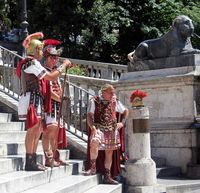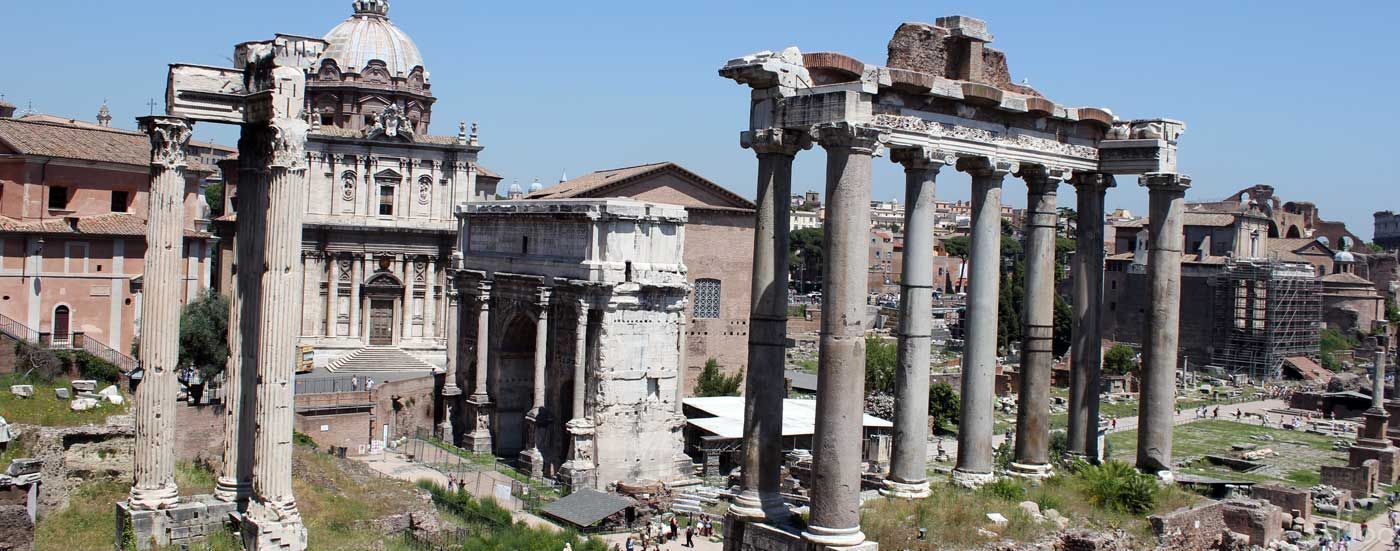The beginnings of Rome
From Romulus and Remus to Gaius Julius Caesar
Rome experienced an eventful history from its legendary founding in 753 B.C. to the death of Julius Caesar. Having begun as a combination of individual herders settlements, Rome developed first into an Etruscan monarchy and then into a republic. Superior military strategy and an efficient society led to the conquest of Italy and finally made Rome the leading power in the Mediterranean after the Punic Wars. With the seizure of power by Caesar, the end of the Republic was initiated.
The legendary founding of Rome
The legendary founding of Rome dates back to the Trojan War. The Trojan Aeneas thus landed in Italy and founded the city of Alba Longa. The daughter of the later king Numitor, Rhea Silvia, was priestess in the temple of Vesta and gave to the god Mars two sons - Romulus and Remus. In anger over the immorality of his daughter, Numitor suspended the two infants in the swamp area of modern Rome, where they were suckled by a female wolf and brought up by a shepherd. On 21st April 753 B.C., they finally founded the city of Rome on the Palatine.
Etruscan kings and the patriciate
Scientifically, the legend had already been refuted by the historian Livy. In fact, there were first settlements in the territory of modern Rome in the 14th Century B.C. These settlements were likely to have allied in the 8th Century B.C. against the rising Etruscan kingdoms before they were conquered around 600 B.C. by Etruscan kings. Of the Roman monarchy there is only a little that is known - around 500 B.C., the monarchy, and thus the rule of the Etruscans, came to an end and the people installed the republic. Two patrician consuls of the nobility now determined the destiny of Rome and were accountable only to the Senate.
Immediately afterwards, the simple people, the plebeians, managed to get their voice represented and 120 years later, one of the two consuls was provided by the plebeians - the final authority, however, was still in the hands of the patricians. In the following period the Roman Twelve Tables Law was created in 470 B.C., which listed the rights of every Roman. The icon of the Twelve Tables Law became the symbol of Rome and can be seen even today everywhere in Rome: S.P.Q.R. - Senatus Populusque Romanus (The Senate and the People of Rome).
The rise of Rome
Equipped with a working social system Rome began to extend its power. By constantly changing tactical alliances Rome defeated the Etruscans in the 4th Century B.C. and subjugated shortly thereafter the Latins and the Samnites. After costly battles against the well formed Romans the last opponent in southern Italy, the Greek city Taranto, felt to the Romans. Further expansion into Gaul, Spain and Sicily soon led to conflict with Carthage and to the Punic Wars, which ended in the complete destruction of Carthage in 146 B.C. Internal conflicts between rich and poor were mitigated by the military reforms of Marius in 104 B.C., which made it possible even for destitute citizens to join the military service, but they eventually ended up in the slave revolts of 136-132 B.C. and 73-71 B.C.
The slave leader Spartacus was finally defeated by the successful commander Crassus, who soon formed the first triumvirate (triple rule over Rome) with Julius Caesar and Pompey. After the death of Crassus, it came down to a conflict between Pompey and Caesar from which Caesar emerged as the sole dictator of Rome. Under Caesar, the Roman Empire could be enlarged significantly. However, when he planed to re-establish a monarchy and the abolition of the Senate, he was murdered on the Ides of March (March 15) 44 B.C. by the Senators with 23 stab wounds.




Tweet